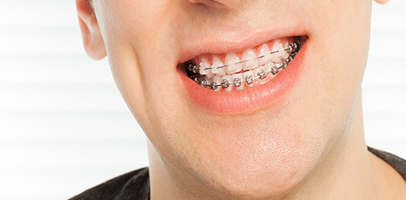
If you’re considering orthodontic treatment, the debate between Damon braces vs traditional or ‘regular’ braces is a common one. While both systems are designed to straighten teeth effectively, there are key differences in how they work, how they feel, and how long they take to get results.
At Evolution Orthodontics, we’ve helped hundreds of patients choose between traditional braces and the Damon system. Here’s everything you need to know to make the right decision for your smile.
How Damon braces and traditional braces move teeth
The biggest difference between Damon system braces vs traditional braces is how they apply force to shift teeth.
Traditional braces use ligatures – elastic ties or metal wires – to hold the archwire in place. These ties create friction, which means more force is often needed to move teeth.
Damon braces, on the other hand, are self-ligating. That means they use a slide mechanism that holds the wire in place without the need for elastics. This reduces friction and allows the wire to move more freely, resulting in gentler, more efficient tooth movement.
While Damon braces don’t come with colourful bands, many patients prefer the streamlined look and added comfort.
Overcrowding: extraction or expansion?
When comparing traditional braces vs Damon, how they manage overcrowding is a major factor.
With traditional braces, extractions are often needed to make space, especially in cases of severe crowding. Some patients may also require palatal expanders.
The Damon system takes a different approach. Because the brackets and wires exert lighter pressure over time, teeth can often be aligned without extractions or expanders. This makes treatment less invasive for many patients.
Which is more comfortable – Damon braces or traditional?
Let’s be honest – all braces come with some discomfort, especially in the early stages.
But in a clinical study, patients reported 60% less discomfort with Damon braces compared to traditional braces. This is largely due to the reduced pressure and absence of tight ligatures, which can cause soreness after adjustments.
Damon braces vs regular braces: which is faster?
One of the most compelling reasons to choose the Damon system is the potential for shorter treatment times.
According to research, patients with Damon braces had their treatment completed 7.2 months faster on average than those with traditional braces. While results vary depending on your individual case, fewer adjustments and more efficient tooth movement often means fewer visits and quicker outcomes.
Are Damon braces more expensive?
In some cases, yes. Damon braces can cost slightly more than traditional metal braces. However, when you factor in fewer appointments, shorter treatment times, and less discomfort, many patients see it as a worthwhile investment.
At Evolution Orthodontics, we offer interest-free payment plans and will provide a detailed quote at your free consultation – so you’ll know exactly what to expect whether you choose Damon or traditional braces.
Damon braces vs traditional braces: Which is right for you?
Ultimately, the best choice depends on your unique needs, treatment goals, and lifestyle. Both traditional braces and Damon system braces are effective options, and our expert team will help you weigh up the pros and cons of each.
If you’re ready to explore your options, book a free consultation at our Blacktown or Dubbo clinic. We’ll guide you through your treatment choices, costs, and expected outcomes – so you can move forward with confidence.
